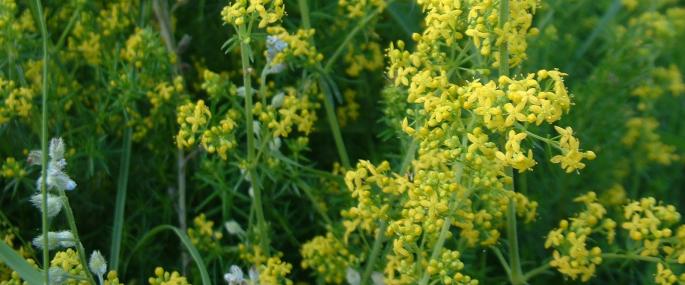The frothy, yellow flowers of Lady's Bedstraw scent the air of our grasslands, chalk downlands, meadows, heaths and sand dunes with honey. The stems can be so dense with flowers that they carpet the grass with yellow from June to September. Dried, this flower has the scent of new-mown hay, and its name is probably derived from the tradition of stuffing straw mattresses with it, particularly those of women about to give birth.
The Wildlife Trusts manage many grassland habitats for the benefit of all kinds of wildlife. Careful grazing with traditional breeds, hay-cutting at the right time and scrub clearance are just some of the ways these fragile habitats are kept in good condition - supporting wildflowers, such as Lady's Bedstraw, and, in turn, invertebrates and the larger animals that prey on them. By volunteering for your local Trust you can help too, and you'll make new friends and learn new skills along the way.
